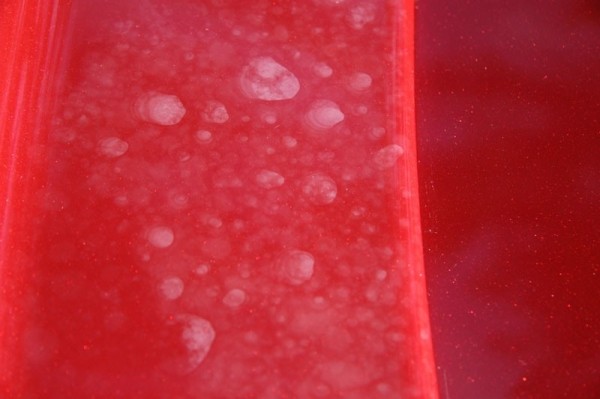dnoraker
New member
- Apr 19, 2010
- 262
- 0
The owner wants it shines up the best I can do, knowing that the car has a lot of issues and he intends on a full restore in the next few years.
It has a ton of paint issues, many that I can't fix (deep scratches, gouges, edges burned through from previous buffings, touched-up and re-sprayed areas, etc.) It doesn't have much oxidation (except where previous detailers didn't work by hand around the taillights and such) but it seems to have some bad staining and water spots that take very aggressive means to remove.
I'm wondering specifically about the water spots, as I've never had a problem removing them. He said it was rained on and the spots showed up. Only heavy compounding or 2500 grit wet sanding remove them, but at the expense of a lot of paint, something this car does not have. Some areas are worse than others.
This is all single stage paint, though I think there are 2-3 layers in some areas. There are some thin spots where it looks like it has been burned through and there is a little darker shade of red underneath.
Is there some kind of chemical that could remove spots without removing paint? this car is headed for a restore in the next few years anyway, but I wanted to do what I can.






It has a ton of paint issues, many that I can't fix (deep scratches, gouges, edges burned through from previous buffings, touched-up and re-sprayed areas, etc.) It doesn't have much oxidation (except where previous detailers didn't work by hand around the taillights and such) but it seems to have some bad staining and water spots that take very aggressive means to remove.
I'm wondering specifically about the water spots, as I've never had a problem removing them. He said it was rained on and the spots showed up. Only heavy compounding or 2500 grit wet sanding remove them, but at the expense of a lot of paint, something this car does not have. Some areas are worse than others.
This is all single stage paint, though I think there are 2-3 layers in some areas. There are some thin spots where it looks like it has been burned through and there is a little darker shade of red underneath.
Is there some kind of chemical that could remove spots without removing paint? this car is headed for a restore in the next few years anyway, but I wanted to do what I can.
